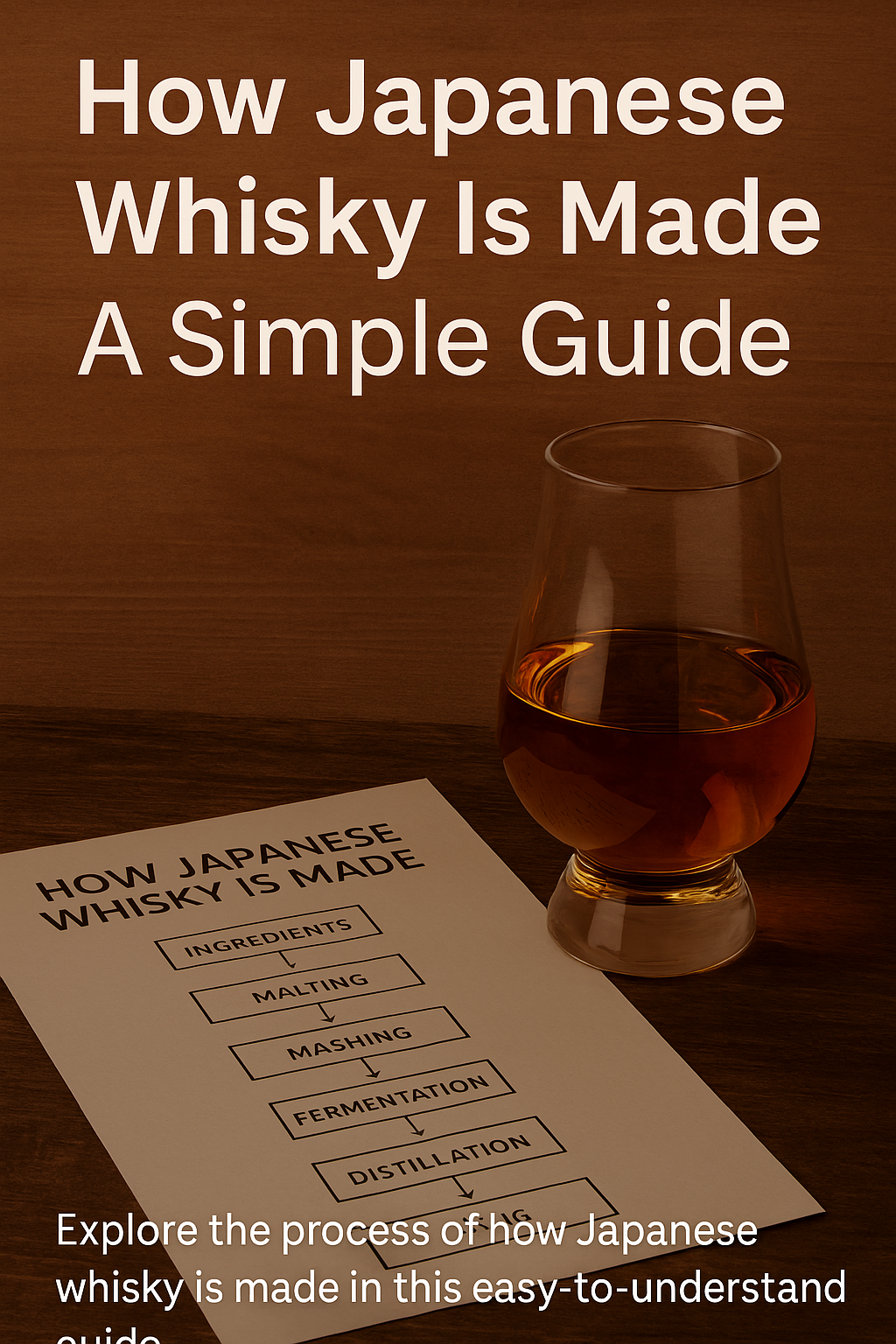How Japanese Whisky Is Made: A Simple Guide
Japanese whisky has become very popular around the world because of its smooth taste and careful crafting. But have you ever wondered how Japanese whisky is made? In this guide, we will explore the step-by-step process of making Japanese whisky in a way that is easy to understand, even if you are new to whisky.
Whether you are curious about whisky for the first time or want to learn more about Japanese whisky, this guide will help you appreciate the art behind every bottle.
What Is Japanese Whisky?
Japanese whisky is a type of whisky made in Japan. It is similar to Scotch whisky but has its own unique style and flavor. Japanese whisky makers focus on making whisky that is smooth, balanced, and full of rich flavors.
Related Internal Link
To learn more about whisky basics, check out our Beginner’s Guide to Whisky Tasting Notes.
The History Behind Japanese Whisky
Japanese whisky began in the early 1900s when a Japanese man named Masataka Taketsuru studied whisky-making in Scotland. He brought back the knowledge to Japan and started making whisky using Scottish methods, combined with Japanese craftsmanship. Over time, Japanese whisky developed its own identity and became famous worldwide.
How Japanese Whisky Is Made: Step-by-Step
Let’s break down the main steps of how Japanese whisky is made. Each step is important to give the whisky its distinct taste.
Step 1: Selecting the Ingredients
The main ingredients in Japanese whisky are:
- Water — Japan has very clean and pure water, which is very important for making good whisky.
- Barley — Malted barley is often used, which is barley soaked and allowed to start germinating.
- Yeast — Yeast helps turn sugar into alcohol during fermentation.
The quality of these ingredients is one reason Japanese whisky tastes so smooth.
Step 2: Malting the Barley
Malting means soaking barley in water and letting it begin to sprout. This helps to convert starches in the barley into sugars that yeast can feed on during fermentation.
Some Japanese whisky makers import malted barley from Scotland, while others malt their own.
Step 3: Mashing
After malting, the barley is ground into a coarse powder and mixed with hot water. This helps dissolve the sugars. The sugary liquid, called wort, is then separated from the leftover grain.
Step 4: Fermentation
The wort is moved to large tanks called fermentation vats. Yeast is added here, and the mixture is left to ferment for several days. During fermentation, yeast eats the sugars and produces alcohol and carbon dioxide.
This stage is important because it affects the flavors that will develop in the whisky later.
Step 5: Distillation
After fermentation, the liquid, called “wash,” contains about 7-8% alcohol. It is then distilled to increase the alcohol level.
Japanese whisky usually uses pot stills for distillation, which is a traditional method that helps keep more flavor in the whisky. The wash is heated and the alcohol evaporates and then condenses into liquid again.
Distillation is often done twice to get a smooth and pure spirit.
Step 6: Aging in Oak Casks
The distilled spirit is placed into oak barrels to age. Aging is very important for Japanese whisky because it helps develop flavors and smoothness.
Japanese whisky makers often use several types of barrels, such as:
- American oak barrels (used for bourbon)
- Sherry casks from Spain
- Mizunara oak barrels, a rare Japanese oak that gives a unique flavor
Whisky is aged for several years, sometimes over a decade, in cool warehouses.
Step 7: Blending and Bottling
After aging, different barrels are blended to create the final flavor. Japanese whisky makers are known for carefully blending different batches to achieve a balanced taste.
The whisky is then filtered and diluted to the right strength before being bottled.
Why Is Japanese Whisky So Special?
Japanese whisky is special because of:
- Attention to detail in every step of the process
- The clean and pure water used
- The cool climate which affects aging
- The use of unique barrels like Mizunara oak
- The tradition of blending to create smooth and balanced flavors
Related Keywords Used Naturally
- How Japanese whisky is made
- Japanese whisky production process
- Japanese whisky distillation
- Japanese whisky aging process
- Japanese whisky ingredients
- Japanese whisky flavor
Enjoying Japanese Whisky
Now that you know how Japanese whisky is made, you can enjoy it even more! Whether you like it neat, on the rocks, or in a cocktail, Japanese whisky offers a wonderful taste experience.
If you want to explore some of the best Japanese whiskies, check out the shop section at Whiskey Worlds where you can find popular Japanese whisky brands and special bottles.
Call to Action
Ready to taste authentic Japanese whisky made with passion and care? Visit Whiskey Worlds to explore a wide selection of Japanese whiskies and find the perfect bottle for your collection or gift.
FAQs About How Japanese Whisky Is Made
1. How long does Japanese whisky age?
Most Japanese whiskies age between 3 to 12 years, but some can be aged much longer depending on the brand and style.
2. What is Mizunara oak?
Mizunara oak is a special type of Japanese oak used for barrels that gives whisky unique flavors like sandalwood and spices.
3. Is Japanese whisky different from Scotch?
Yes, while similar in method, Japanese whisky tends to be smoother and lighter, often with more delicate flavors.
4. Can I make Japanese whisky at home?
Making whisky is a complex process that requires special equipment and legal permissions, so it’s best left to professional distilleries.
Final Thoughts
Understanding how Japanese whisky is made helps you appreciate the time, skill, and passion that go into each bottle. From selecting pure water to blending carefully aged spirits, Japanese whisky is truly a craft worth savoring.
For more about whisky and tasting notes, visit our blog and discover your new favorite whisky today!
